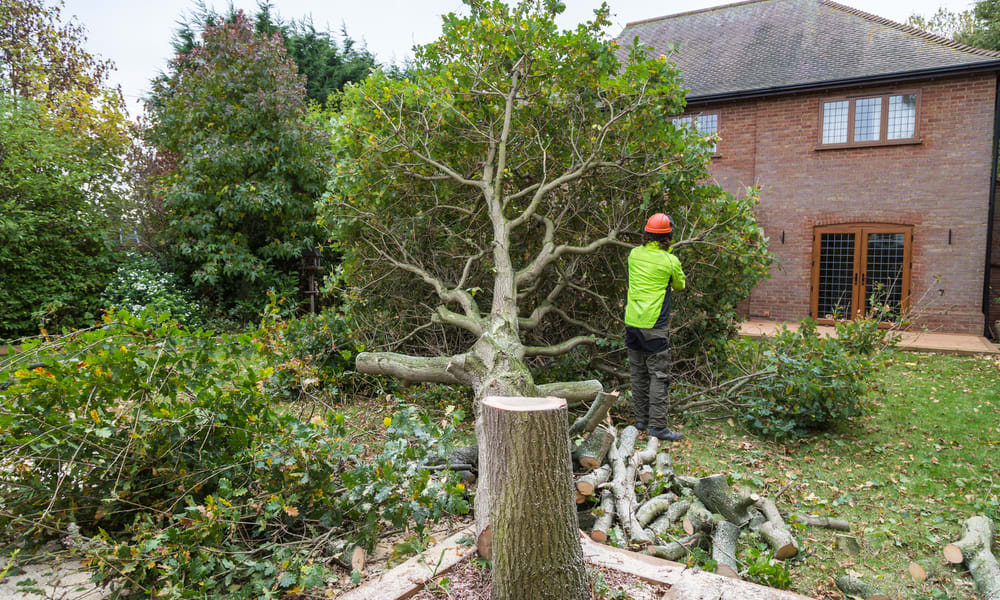What You Should Know About Stump Removal Process
After cutting down a tree, many property owners face the challenge of dealing with the remaining stump. Tree stumps can become obstacles for landscaping, mowing, and future construction projects. Understanding the stump removal process helps homeowners make informed decisions about this important yard maintenance task. From grinding methods to complete extraction, various approaches exist to eliminate these unwanted remnants effectively.

Tree stumps left behind after tree removal can present numerous challenges for property owners. These remnants not only affect the aesthetic appeal of your landscape but can also pose safety hazards and interfere with lawn maintenance activities. Professional stump removal services offer several methods to address this common problem, each with distinct advantages and considerations.
Understanding the Stump Removal Process
The stump removal process typically begins with an assessment of the stump’s size, location, and root system complexity. Professional technicians evaluate factors such as soil conditions, nearby structures, and underground utilities before determining the most appropriate removal method. The process generally involves either grinding the stump below ground level or complete extraction, including the root system.
Stump grinding represents the most common approach, using specialized machinery to chip away the wood until it sits several inches below the soil surface. This method allows for immediate replanting or landscaping in the area. Complete extraction, while more labor-intensive, removes the entire stump and major root system, preventing any potential regrowth.
How to Get Rid of Stump: Available Methods
Several methods exist for stump removal, ranging from professional services to DIY approaches. Chemical stump removers offer a gradual solution, breaking down the wood fiber over several months through the application of potassium nitrate or similar compounds. This method requires patience but works effectively for smaller stumps.
Mechanical removal using stump grinders provides immediate results. These powerful machines use rotating cutting discs to reduce stumps to wood chips within hours. Hand digging and cutting remains an option for smaller stumps, though this method requires significant physical effort and time investment.
Burning represents another traditional approach, though local regulations often restrict this method due to fire safety concerns. Each technique offers different timelines, costs, and effectiveness levels depending on stump characteristics and site conditions.
Stump Removal Cost Considerations
Stump removal costs vary significantly based on multiple factors including stump diameter, location accessibility, root system complexity, and chosen removal method. Professional stump grinding typically ranges from $75 to $400 per stump, with larger stumps commanding higher prices due to increased labor and equipment time requirements.
Complete stump extraction generally costs more than grinding, often ranging from $150 to $500 per stump. Additional factors affecting pricing include soil conditions, proximity to structures, and the number of stumps requiring removal. Many companies offer discounted rates for multiple stump removal projects.
| Service Provider | Method Offered | Cost Estimation |
|---|---|---|
| Davey Tree Expert Company | Stump Grinding | $100-$300 per stump |
| Bartlett Tree Experts | Grinding & Extraction | $125-$350 per stump |
| Local Tree Services | Various Methods | $75-$250 per stump |
| HomeAdvisor Contractors | Grinding Services | $90-$400 per stump |
Prices, rates, or cost estimates mentioned in this article are based on the latest available information but may change over time. Independent research is advised before making financial decisions.
Professional Stump Removal Service Benefits
Professional stump removal services offer several advantages over DIY approaches. Experienced technicians possess specialized equipment designed specifically for efficient stump removal, reducing project completion time from days to hours. Professional services also include proper disposal of wood chips and debris, eliminating cleanup concerns for property owners.
Safety considerations make professional services particularly valuable. Stump removal involves powerful machinery and potential underground hazards such as utility lines or septic systems. Licensed professionals carry insurance coverage and understand proper safety protocols, reducing liability risks for property owners.
Additionally, professional services often provide warranties or guarantees on their work, ensuring complete customer satisfaction. Many companies offer additional services such as soil amendment, grass seeding, or landscaping consultation to restore the affected area properly.
Preparing for Stump Removal
Proper preparation ensures smooth stump removal operations and prevents potential complications. Property owners should mark underground utilities by contacting local utility location services at least 48 hours before scheduled removal. Clearing the area around stumps of decorative elements, sprinkler systems, or valuable plants protects these items from potential damage.
Discussing access requirements with service providers helps prevent delays or additional charges. Large stump grinding equipment requires adequate space for maneuvering, and narrow gates or overhead obstacles may necessitate alternative approaches or specialized equipment.
Considering future landscaping plans during the removal process allows for better coordination. Some property owners prefer leaving wood chips for mulch, while others require complete cleanup for immediate replanting or construction projects.
Stump removal represents an essential step in complete tree removal projects, offering both aesthetic and practical benefits for property maintenance. Whether choosing professional services or DIY methods, understanding available options and associated costs helps property owners make informed decisions that best suit their specific needs and budget requirements.




